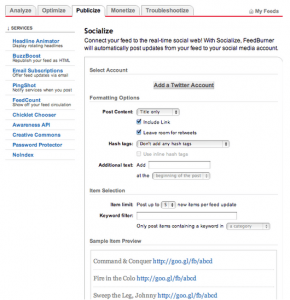Website optimization has been a very popular topic these days since more and more people are on the web. Businesses in particular would want their websites to load fast because every second reduced from the loading time would result in a 1% increase in conversion rates.
However, the question here is how does it work? How can you speed up your website and what are some of the aspects involved in speeding up your website? I’ll be explaining some of the usual methods of speeding up websites and why they work. This way, you’ll not only know the methods but also know more about in-depth intricacies behind a website and how it works from the back end and best optimize them for better conversion.
Factors involved in website optimization
Typically, there are two reasons as to why your website is slow. The first reason would the contents and the codes of your website. The other reason would be some inefficiency in the web host. This one can only be resolved by changing web hosting providers.
Monitoring your website’s speed
Before tackling the issue of speeding up your page, it’s important to know your website’s current speed. For these, you would need tools like Page Speed Test, Loads In and Pingdom. Programs like Page Speed Test and Loads In would monitor the overall speed of the website including the speed based on the components inside.
Making use of browser development tools
By knowing the two main factors that affect a page’s speed (server and individual coding), it’s important now to monitor which aspect takes up the most effort to know which parts to modify. This is where Browser Developer Tools come in handy. Browsers will usually have developer tools (e.g. Chrome DevTools) that website owners can download to monitor their websites. If you make use of this tool, you can monitor the loading time, scripting time, painting time, rendering time, and others. The tool will then show how much resources and how much bandwidth each of these aspects would take up so that you’ll know which parts of your website you must trim. This works in getting down to the core of which aspect is taking up too much resources from the server and which must be addressed.
Speeding up the website
After monitoring the speed of your website and breaking it down further by knowing the aspects that take up the most resources, the next thing to do is to develop a plan on how to improve the areas that affect your website’s speed.
Use a CDN
The CDN evenly distributes your bandwidth on several server lines so that the server doesn’t get cramped. One of the reason for bad traffic in a server would be the cramping of information in a single server line. With a CDN, this cramping can be avoided since the CDN distributes evenly. This technique will allow you to save up on 60% of your bandwidth and saves up on 50% of your website’s requests which will make your website move half as fast as before.
Use Gzip
Compressing files will also save on your bandwidth. Gzip allows you to zip all of your files that contain your codes for your website. This is a fast method that allows you to speed up your website’s loading time. One of the main problems of unzipped files is that they are scattered. When they are scattered, the website will have a tough time trying to download the files so that they may appear on the website. Zipping the files will help the website easily access the files since they are all in one spot. Zipping files may also help reduce cramping in the server since compressed files appear smaller. This tip will help you speed up your website and help with reducing server traffic at the same time.
Use static HTML instead of PHP
PHP takes up a lot of your server’s resources because it requires a lot of information to go through the server for it to work. Due to this, the server may slow down because of the big amount of information that needs transferring. To fix this, it helps to use static HTML coding instead of PHP whenever it’s possible. If your web host doesn’t perform that well, then at the very least, this technique can help a bit in reducing server traffic by a bit.
Allow Keep-Alive
The Keep Alive function is the prompt message that asks the server for permission to download a certain file. If you enable this function, you can download more than one file without having to keep on asking permission from the server. This will reduce the number of requests from the server. This is especially useful if your web host has a slow server because that way, you can also lessen the number of times the website asks permission from the web server. If your website doesn’t make that many requests to the server, then the server does not need to push too much information at one time.
You may enter this code in your .htaccess file to enable the Keep Alive:
<ifModule mod_headers.c>
Header set Connection keep-alive
</ifModule>
Keep Your Codes in One File
Sometimes, a website loads slowly whenever the codes in your files are not arranged properly. One of the best ways to organize your files would be to separate your CSS and Javascript files. Keep your CSS files (all of them) in one single file. Do the same also for Javascript files. It does take some time for your website to download the codes that make up the page. By keeping your codes in one file, you are giving the website an easier time reading all your codes at once since all of them are kept in one file.
Now that you know a few keys to optimizing your website, it’s time to put them to practice. Increasing your website speed can result in higher conversion rates, boost credibility, and establish confidence in a potential customer. With these benefits waiting for you, it’s time for you to optimize your website!
Digital & Social Articles on Business 2 Community(22)
Report Post






